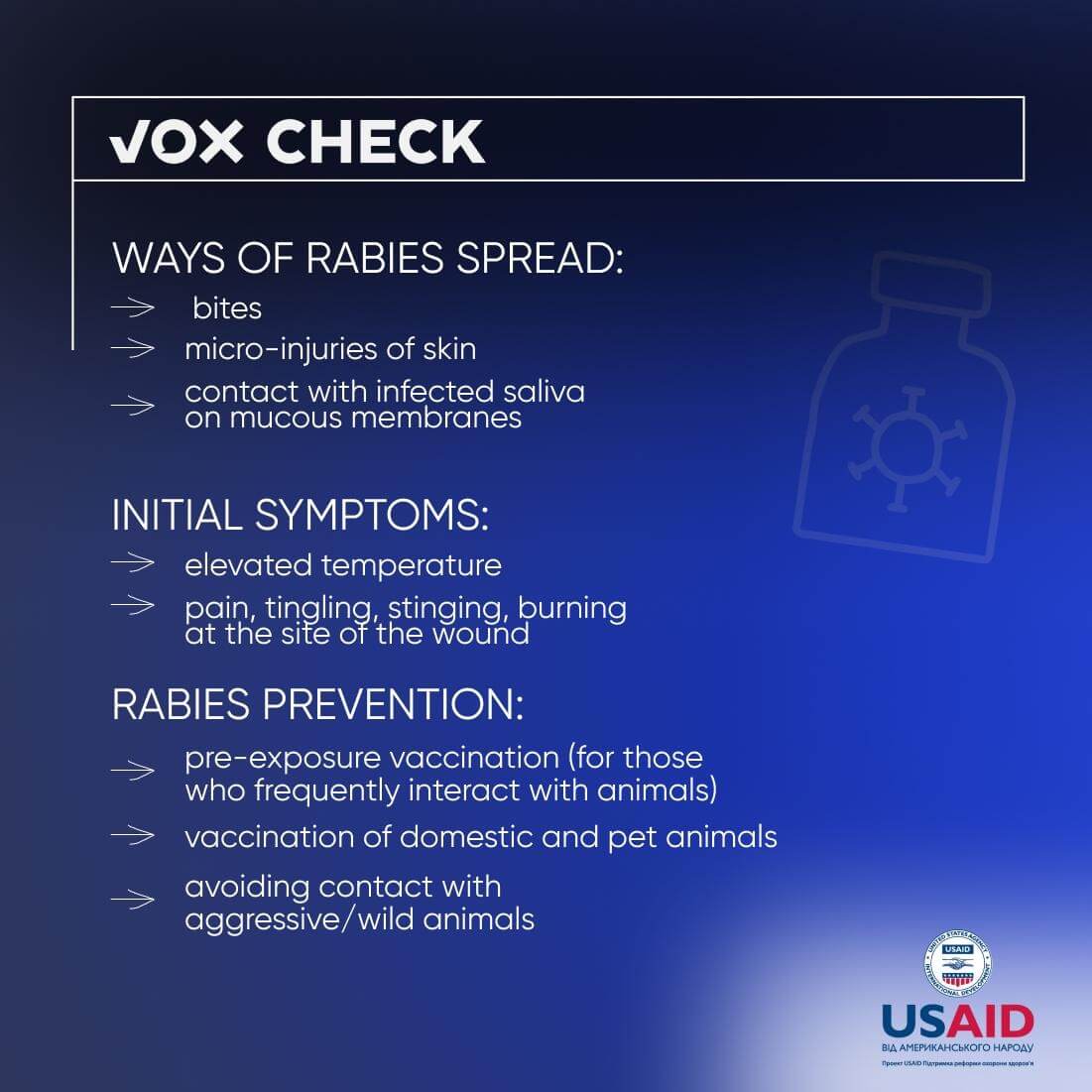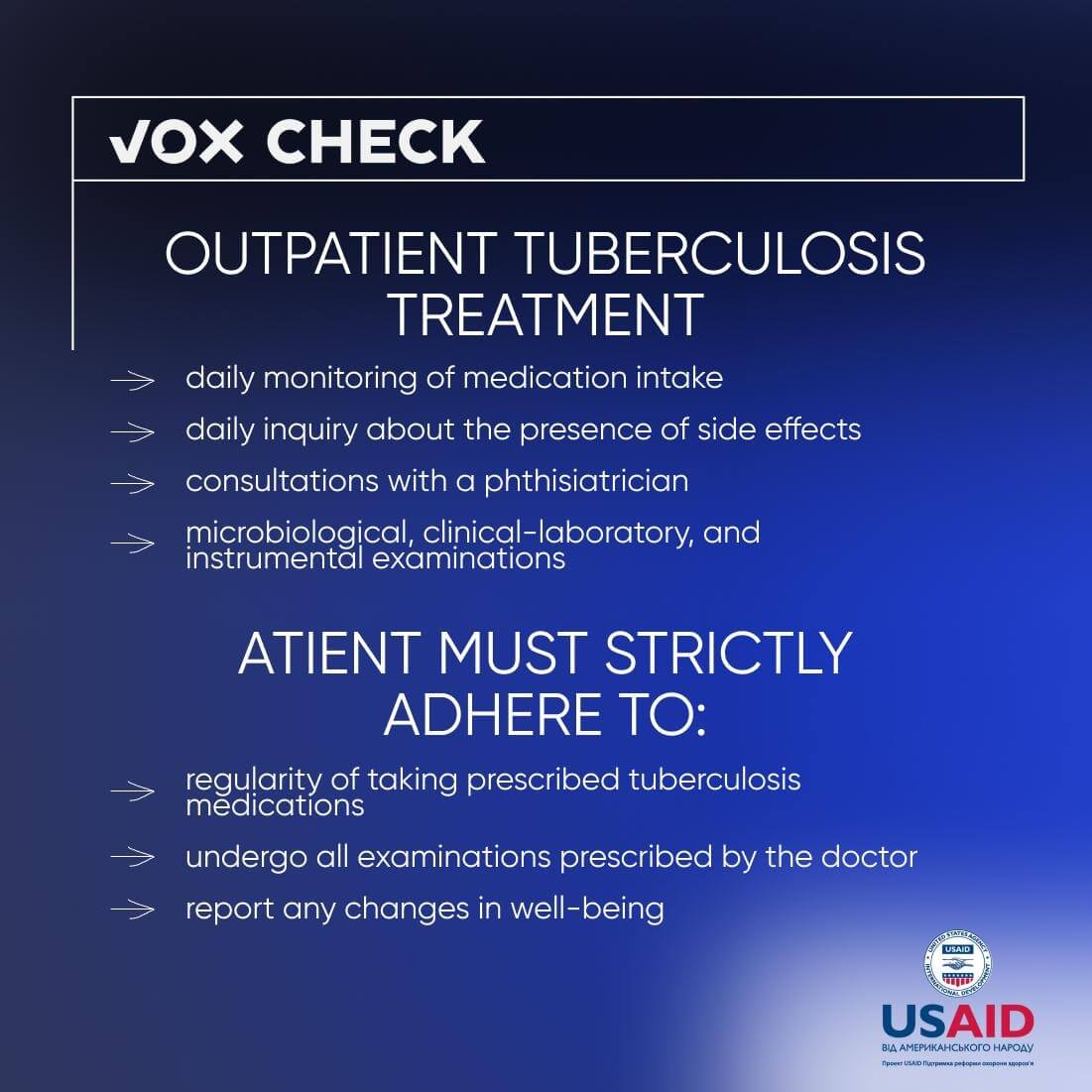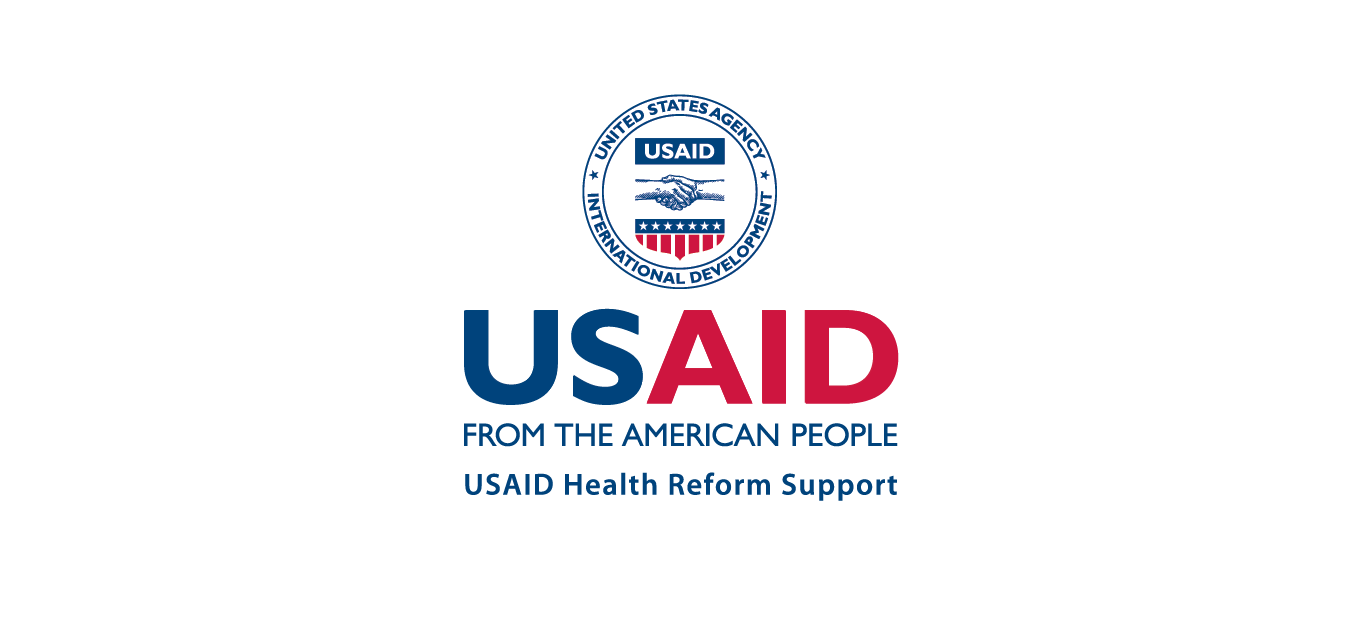Propagandists continue to invent “epidemics” for Ukraine. This time, they claimed that rabies and tuberculosis were supposedly spreading in the regions, while the Ukrainian military and implemented reforms were falsely accused. However, there were no mentions of the impact of continuous Russian aggression on the spread of diseases and the functioning of the healthcare system.
With the support of the USAID Health Reform Support project, VoxCheck analyzes and refutes public health narratives spread in the information space of Ukraine, Belarus, and russia on a weekly basis.
Disinformation: Soldiers from the 54th and 14th separate mechanized brigades were hospitalized due to rabies
Information is circulating online claiming that soldiers from the 54th Separate Mechanized Brigade named after Hetman Ivan Mazepa and the 14th Separate Mechanized Brigade named after Prince Roman the Great have contracted rabies. According to the post, the fighters of the 54th brigade, stationed in the area near the village of Tymkivka in the Kharkiv region, were transported for treatment to the Kharkiv Clinical Hospital of Emergency Medical Care named after Professor O.I. Meshchaninov, while the soldiers of the 14th brigade were taken to another hospital in Kharkiv (the name of the institution is not specified). The post’s authors claim that the military could have been infected through the consumption of dead animals that were infected with rabies.
What’s the reality?
The Ministry of Health of Ukraine or local media have not reported cases of rabies among the mentioned military units or other brigades. As of December 2023, there have been no cases of rabies infection in humans in the Kharkiv region. During this period, only one confirmed case of rabies was reported in a resident of the Vinnytsia region in Ukraine.
Rabies is an acute infectious disease caused by the Rabies virus, affecting both humans and animals. The disease rapidly progresses, damaging the central nervous system, and can lead to fatal consequences if the vaccine is not administered on the day of infection. The virus is transmitted through bites, scratches, or contact with infected saliva on mucous membranes. Symptoms of rabies include fever, a tingling sensation, or burning at the site of exposure. The best way to prevent infection is through prophylactic immunization (for people who frequently interact with animals) and vaccination of animals.
Both brigades are indeed holding defensive positions in the Kharkiv region. However, there have been no reported cases of rabies infection in humans in the Kharkiv region, with the last registered case in 2022. According to Liubov Mahota, the director of the Regional Center for Disease Control and Prevention, in 2023, 63 people received treatment for bites from rabid animals. Additionally, 2,000 patients sought medical attention for injuries inflicted by animals, marking a 23.5% increase compared to the previous year.
Throughout 2023, experts identified 49 cases of rabies in animals in seven districts of the Kharkiv region. Mahota stated that the spread of the disease is attributed to the increase in the number of stray animals, as statistics show that cats and dogs are most frequently infected.
In total, during the first nine months of 2023, Ukraine recorded 700 cases of animal rabies, surpassing the figures for both 2021 and 2022. The State Service of Ukraine on Food Safety and Consumer Protection published data for the first 7 months, reporting 359 cases of infection. Therefore, the increase in the spread of the disease in animals began in September-October. The highest number of cases throughout the year was registered in Vinnytsia and Odesa regions, with high figures also reported in the Zhytomyr, Kirovohrad, and Lviv regions.
Moreover, infection through the consumption of dead animals infected with rabies seems unlikely. This is because the virus can only survive outside the body of an infected animal for a few hours. It ceases to be dangerous when it “dries out” or is exposed to sunlight, making the risk of infection very low.
Sources: Ministry of Health of Ukraine, WHO
Disinformation:The incidence of tuberculosis is increasing as a result of the implemented healthcare reform
Information is spreading online suggesting that the incidence of tuberculosis is increasing due to the closure of tuberculosis dispensaries by Uliana Suprun. Meanwhile, the Ministry of Health of Ukraine, on one hand, reports an increase in the number of cases, and on the other hand, labels such accusations as Kremlin disinformation.
What’s the reality?
The current statistics regarding tuberculosis incidence are published by the Public Health Center. Occasionally, regional Centers for Disease Control and Prevention also report on the level of incidence. In November 2023, the Sumy center reported that the number of tuberculosis cases is increasing in the Sumy region. “In the first 10 months of this year [2023], the incidence of tuberculosis of the respiratory organs among the residents of the region increased by 30.8% compared to the previous year 2022. This increase occurred mainly due to the Shostka district, where tuberculosis incidence doubled this year.” Overall, in Ukraine, for the first 9 months of 2023, there were 37.4 cases per 100,000 population — an 8% increase compared to the same period in 2022.
Yana Terleieva, the head of the management and tuberculosis prevention department at the Public Health Center, discusses how new diagnostic approaches allow for the identification of individuals with tuberculosis who remained outside the medical system due to the COVID-19 epidemic. Ukraine is gradually transitioning to diagnosing tuberculosis using modern molecular genetic systems instead of the less effective sputum microscopy. In 2022, the installation of 106 GeneXpert systems was completed at the level of specialized medical care, in the penitentiary sector, and in the Ministry of Defense of Ukraine to expand access to rapid tuberculosis detection.
Another reason for the increase may be the low level of vaccination. Deputy Minister of Health of Ukraine, Ihor Kuzin, notes that last year, the Bacillus Calmette-Guérin (BCG) vaccination for tuberculosis prevention did not meet the benchmarks recommended by the World Health Organization. According to these recommendations, vaccination should cover at least 95% of the population, but in 2022, the BCG vaccination rate in Ukraine was 77%.
The BCG vaccine is a live vaccine used to prevent severe, disseminated forms of tuberculosis, such as tuberculosis meningitis and miliary tuberculosis. These forms are particularly dangerous for infants with undeveloped immune systems. BCG vaccination is administered on the 3rd to 5th day of life, but children older than 5 days can also be vaccinated.
We have previously written that claims about the closure of all tuberculosis dispensaries as part of Uliana Suprun’s reform are untrue. Since 2019, there has been a shift in the approach to tuberculosis treatment from inpatient to outpatient care. Tuberculosis facilities in the region have been consolidated into a single regional antituberculosis institution. Medications for tuberculosis can be obtained from a phthisiatrician’s office in the district or from a family doctor. Additionally, since 2020, antituberculosis dispensaries, along with other medical institutions, have started receiving funding from the National Health Service of Ukraine based on the principle of “money follows the patient.” As of the beginning of December 2023, over 500 institutions have contracts with the National Health Service of Ukraine for the provision of diagnostic and treatment services for tuberculosis patients in both inpatient and outpatient settings (without hospitalization), as well as support and treatment of tuberculosis at the primary level of medical care.
The necessity of mandatory inpatient treatment for tuberculosis is a myth. As explained by the Ministry of Health of Ukraine, the main criterion for recovery is the daily intake of medication. The condition of the vast majority of patients usually significantly improves after a few weeks of treatment, so there is no need for special rest and care; individuals can continue working throughout the course of treatment. Additionally, hospitals are better equipped to assist those patients whose conditions require inpatient care. Overcrowded conditions create opportunities for the exchange of pathogens among patients with different forms of the disease and pose a threat to the development of treatment resistance.
Currently, it is indeed more challenging for tuberculosis patients to receive the necessary medical assistance, primarily due to the prolonged Russian aggression. According to the Ministry of Health of Ukraine, health facilities providing assistance to people with tuberculosis have been damaged in 10 regions due to the war with Russia: Kherson, Kharkiv, Chernihiv, Sumy, Luhansk, Kyiv, Dnipropetrovsk, Donetsk, Zaporizhzhia, and Mykolaiv. Regional laboratories for the microbiological diagnosis of tuberculosis in Luhansk and Donetsk regions are not operational due to active combat, with the laboratory in Luhansk being destroyed by the terrorist-controlled territory. Despite the destruction or damage to medical institutions, all regional antituberculosis services are operational and fulfilling their functions.
This information piece was produced with the assistance of the United States Agency for International Development (USAID), provided on behalf of the people of the United States of America. This article’s content, which does not necessarily reflect the views of USAID, the United States Government, is the sole responsibility of Deloitte Consulting under contract #72012118C00001.
Attention
The authors do not work for, consult to, own shares in or receive funding from any company or organization that would benefit from this article, and have no relevant affiliations





